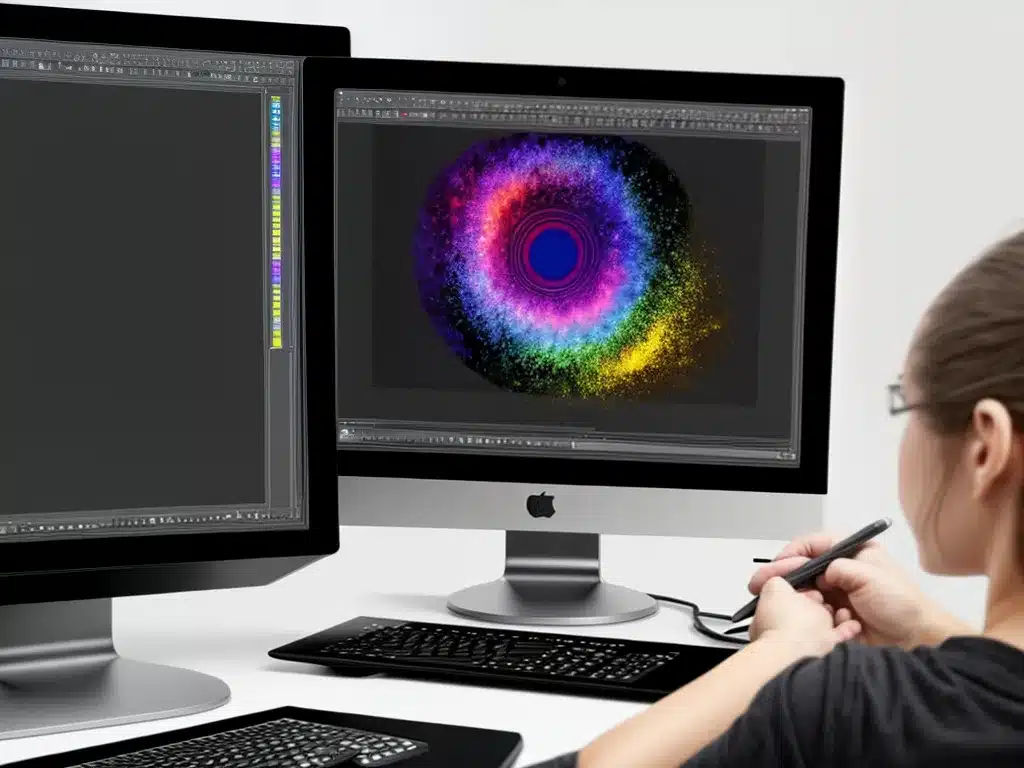
Introduction
As a digital artist, one of the most important decisions you need to make is whether to use a graphics tablet or a pen display monitor for creating your artwork. Both have their pros and cons, and the right choice depends on your specific needs and preferences as an artist. In this in-depth article, I will compare graphics tablets vs pen displays to help you determine which is better for your digital art.
Key Differences Between Graphics Tablets and Pen Displays
Drawing Surface
The main difference between a graphics tablet and a pen display is the drawing surface.
-
Graphics tablets have a canvas that is separate from the monitor. You draw on the tablet while looking at your computer screen. There is a disconnect between your hand and eyes that takes time to get used to.
-
Pen displays have a screen that you can draw directly on. What you draw appears under the pen tip, providing more natural hand-eye coordination.
Cost
-
Graphics tablets are generally more affordable, with starter tablets available for under $100. Higher-end versions can cost up to $600.
-
Pen displays are a bigger investment, starting around $600 and going up to thousands of dollars for large professional models.
Customization and Controls
-
Graphics tablets often feature customizable ExpressKeys and other shortcut buttons to improve workflow. The best models offer touch capability in addition to the pen.
-
Pen displays have on-screen controls via the display menu. Some models include ExpressKeys or a touch ring. Less opportunity for customization.
Portability
-
Graphics tablets are lightweight and ultra-portable. The drawing surface detaches from the computer.
-
Pen displays tend to be much bulkier and heavier. Not as suitable for use on-the-go.
Display Quality
-
Graphics tablets require no display, you look at your computer screen. Quality depends on your monitor.
-
Pen displays have a built-in high resolution display designed for drawing and art. Better color accuracy.
Key Factors to Consider
Budget
Your budget plays a huge role in deciding between a graphics tablet or pen display. Entry-level graphics tablets are much more affordable, while pen displays cost significantly more. Determine how much you want to invest as an emerging digital artist.
Drawing Style
The disconnect between hand and eye when using a graphics tablet isn’t for everyone. If you prefer the intimacy of drawing directly on screen, a pen display is better. Graphics tablets work well for those comfortable working while looking at the monitor.
Ergonomics
Pen displays allow you to work directly on screen at your desk, requiring some hunching over. Graphics tablets let you maintain better posture as your hands work on the desk surface while your eyes look up at the monitor. Wrist strain is a common concern with prolonged use of pen displays.
Portability
If you’re a traveling digital artist or want to work in different locations, a lightweight graphics tablet offers maximum mobility. Pen displays tend not to be very portable due to their larger size and bulk.
Customization
Graphics tablets provide more opportunity for tailoring shortcuts, controls, and touch capabilities to boost productivity. Pen displays have more limited options for customization and ExpressKeys.
Computer Specs
Pen displays demand more from your computer’s processing capabilities and graphics card compared to a graphics tablet without a display. Make sure your computer meets the minimum requirements before choosing a high resolution pen display.
Recommendations
For beginner digital artists on a budget, a graphics tablet provides an affordable entry point to explore creating art digitally. Models like the Wacom Intuos and Huion H420 offer strong value. Intermediate users ready to invest more may prefer upgrading to a pen display for the most natural drawing experience.
Professionals and artists focused on highly detailed work may benefit most from a high-end pen display. The immediacy of drawing directly on screen allows for precise detailing. Models like the Wacom Cintiq Pro and XP-Pen Artist line provide excellent performance for dedicated digital creators.
Ultimately there is no definitive “better” option. Evaluate your budget, drawing preferences, customization needs, and computer capabilities to decide whether a graphics tablet or pen display fits best. Try out each type of device in person when possible. Choosing the right tool is essential for creating your best digital art.
Frequently Asked Questions
What graphics tablets are best for beginners?
Excellent beginner graphics tablets include the Wacom Intuos, Huion Inspiroy H640P, and XP-Pen Deco Pro. These provide strong value without breaking the bank. Many include free software bundles to get started.
Do professionals use graphics tablets or pen displays?
Professionals often use high-end pen displays that allow them to work directly on screen. Popular professional models include the Wacom Cintiq Pro, XP-Pen Artist, and Huion Kamvas Pro. Some also supplement with a graphics tablet for portability.
Is there lag on pen displays?
There can be some lag between your pen stroke and the line appearing on screen with pen displays. Higher-end models have very little lag that does not affect drawing. Lower budget models tend to have more noticeable lag.
Are pen displays better for drawing?
Many artists feel pen displays provide a more natural and intuitive drawing experience as you work directly on the screen surface. However, others prefer the disconnect of graphics tablets. It depends on personal preference and comfort.
How customizable are pen displays compared to tablets?
Graphics tablets offer more customization and shortcut options with ExpressKeys and other buttons. Pen displays have more limited options for tailoring express keys and controls due to the built-in screen.
What computer specs are needed for pen displays?
Pen displays require more power to run the high resolution screen. A strong CPU, at least 8GB RAM, a dedicated graphics card like NVIDIA Quadro or AMD Radeon, and HDMI or USB-C ports are recommended minimum specs.












